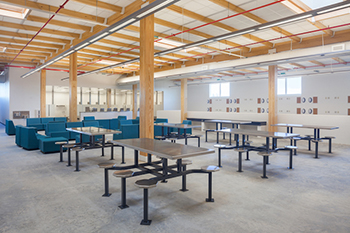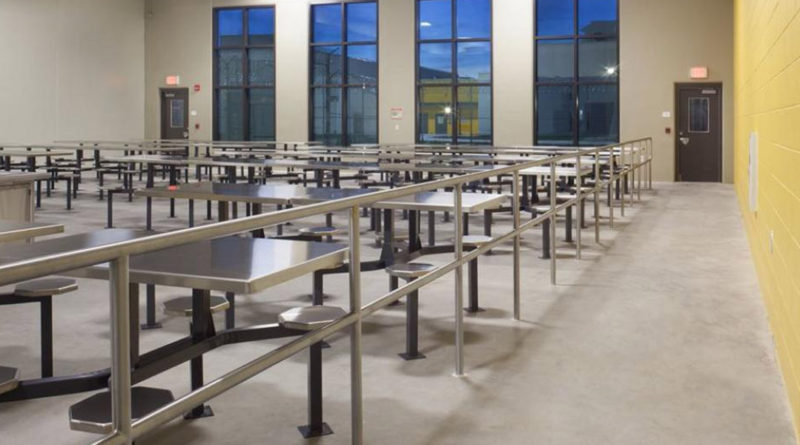Q&A: Emerging Trends in the Corrections Market
 SACRAMENTO, Calif. — The corrections market continues to face everything from overcrowding to health care and compliancy issues to budgetary restraints. With this combination of challenges, architects in the corrections market have had to come up with creative ways to evolve with the changing tides.
SACRAMENTO, Calif. — The corrections market continues to face everything from overcrowding to health care and compliancy issues to budgetary restraints. With this combination of challenges, architects in the corrections market have had to come up with creative ways to evolve with the changing tides.
Correctional News spoke with Darrell Stelling, AIA, principal and leader for the Justice+Civic Sector of the Sacramento, Calif., office of DLR Group, about trends that have emerged in the corrections market as an answer to these issues and how architects can incorporate these trends into projects.
Q: What overall trends do you see developing in the corrections industry?
Stelling: The biggest trend I see is the need for medical and mental health facilities. Facilities of the past are jail facilities designed to incarcerate, and medical and mental health programs had to fit within this environment. The latest trend reverses that perspective so that we first design the facilities specifically for medical and mental health patients, and the incarceration requirement becomes just a unique element of that model instead of the other way around.
Q: What design trends do you see growing in correctional/justice projects?
Stelling: Best practices and evidence-based design is going to play a big role in the design of medical and mental health facilities. There is not a lot of research yet completed on this so some of the newer designs will play a big role in determining what works and what does not. Some of the specific trends that we will be moving toward incorporate natural light, outdoor views, landscaping, calming colors and more natural finishes, while still maintaining a secure environment.
Q: What projects are you currently working on, and how are you incorporating these trends into recent projects?
Stelling: One of the most recent projects we are working on that highlight these best practices is the Sonoma County Behavioral Health Housing Unit in Santa Rosa, Calif. This project incorporates internal courtyards with landscaping and views from sleeping rooms. We are also taking into account the special population types, making sure units are properly sized for the unique needs of individuals to be housed in these spaces. Another project with very similar concepts is the Ventura County Todd Road Jail Health and Programming Unit in Santa Paula, Calif. But some of our existing projects have truly led the way for developing more restorative program spaces such as the Bledsoe County Correctional Complex in Pikesville, Tenn.
Q: How are these projects different from ones you’ve completed in the past?
 Stelling: The main difference is in the past we saw more of an emphasis on designing jails based on maximizing the number of beds and security. We are taking a big departure from asking, ‘How many beds can we fit in this space?’ and moving toward a more rehabilitative justice model, asking questions about what this space needs to accomplish. We are now asking questions about how might we reduce the recidivism rates by providing programming spaces to educate, socialize and address medical and mental health issues with the mission to rehabilitate first, and integrate security around those parameters?
Stelling: The main difference is in the past we saw more of an emphasis on designing jails based on maximizing the number of beds and security. We are taking a big departure from asking, ‘How many beds can we fit in this space?’ and moving toward a more rehabilitative justice model, asking questions about what this space needs to accomplish. We are now asking questions about how might we reduce the recidivism rates by providing programming spaces to educate, socialize and address medical and mental health issues with the mission to rehabilitate first, and integrate security around those parameters?
Q: What do you see as the future for the corrections industry?
Stelling: The medical and mental health populations in detention facilities continue to rise. A recent study through the National Association of Counties indicates 64 percent of jail inmates have a mental illness. That’s an incredible number, and most facilities are inadequately prepared to provide for the needs of these individuals. I see a big need coming in the future to design specific parts of (or full) facilities dedicated only to medical and mental health inmates.
Q: What do you think is the No. 1 issue that keeps the corrections market from evolving, and how is DLR Group working with government agencies to overcome this issue?
Stelling: I’m not sure it’s just one issue, especially when it comes to the evolution of addressing mental illness within the detention setting. We are always learning and educating ourselves, our clients, our communities and law-making agencies across the country. Many things need to occur to turn these places of detention into places of safety and healing for inmates and their families all while keeping the communities safe. We are just now beginning to see evidence-based results of facilities and programs that combine to create healthier rehabilitative environments for offenders. I’m hopeful about how this is going to be a real game-changer in detention and correctional services.

